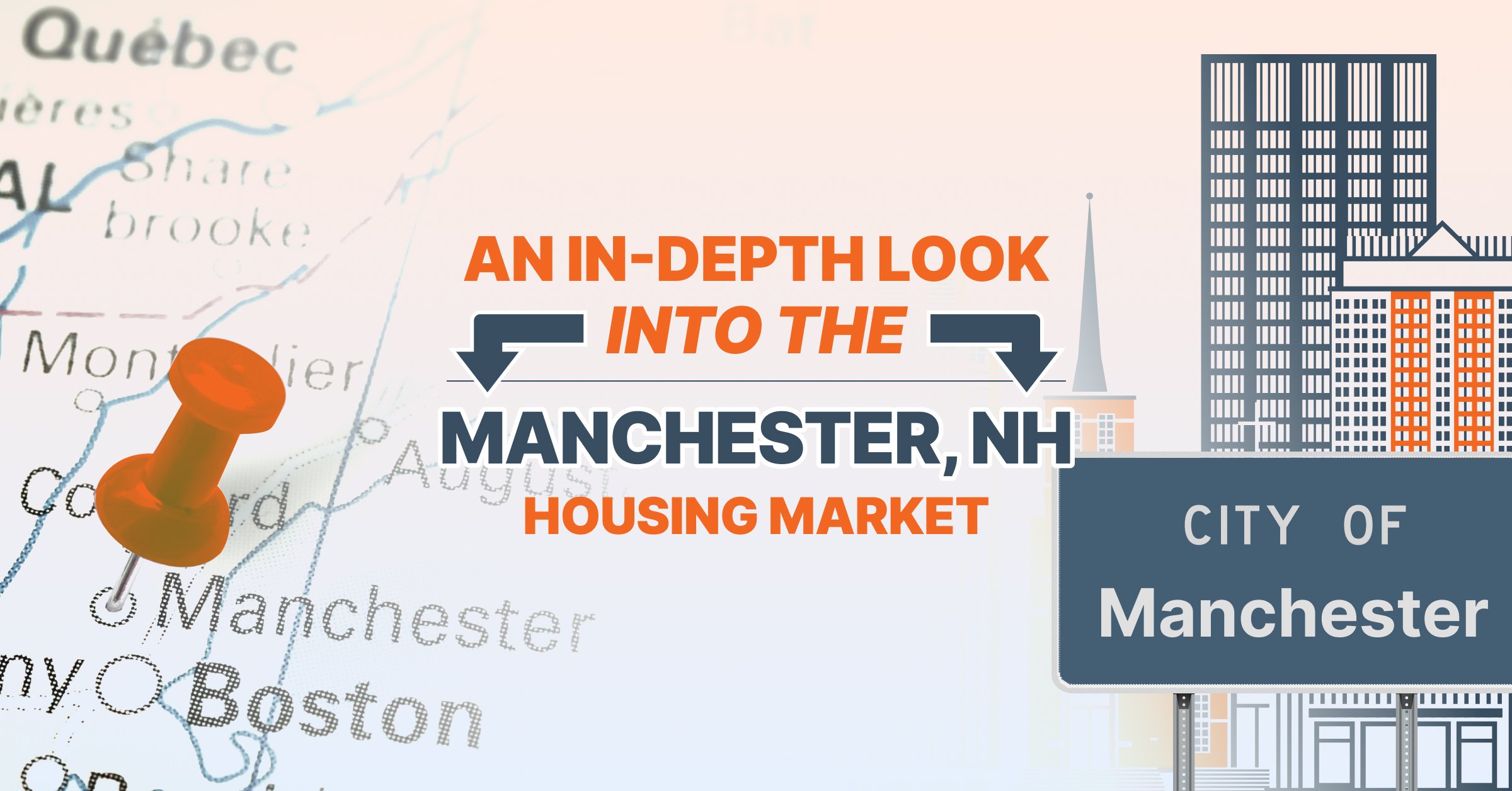Now that mortgage rates have dipped below 7%, many hope the housing market will ease in 2024—creating new opportunities for buyers and sellers.
As of January 11, 2024, the average 30-year fixed mortgage rate was 6.66%, down from the recent peak of 7.79%. Furthermore, the median U.S. home sales price in Q3 2023 was $431,000, down from a Q4 2022 peak of $479,500. Also, existing monthly home sales in November rose for the first time in five months despite the late season.
These are encouraging trends regarding home affordability and inventory. To get a fuller picture of the U.S. housing market and the implications for 2024, let’s take a closer look.
Table of Contents |
Key Takeaways:
Mortgage rates have recently fallen below 7%, marking a potential easing in the housing market in 2024. The Federal Reserve halted interest rate hikes since July. With U.S. inflation down from 9% in June 2022 to 3.3% in December 2023, a "soft landing" is possible.
Positive housing trends include the Federal Reserve's paused interest rate hikes, increased construction, with over 30% of single-family homes for sale in May being new builds, and a strong labor market with job growth, lower unemployment, and rising wages.
Housing market challenges persist with a 3.2 million home shortage, driven by construction delays, cautious builders, supply shortages, and cautious sellers unready to let go of their lower interest rates.
Encouraging U.S. Housing Trends
Since July, the Federal Reserve has paused hiking its key interest rate. Now that U.S. inflation, as measured by the Consumer Price Index (CPI), has fallen from its June 2022 peak of 9% to 3.3% in December 2023, the Fed may have achieved a “soft landing,” i.e., reduced inflation without causing a recession.
Either way, interest rates—and mortgage rates, by extension—seem to be stabilizing. This is good news for buyers because it gives them more confidence that mortgage rates won’t continue rising indefinitely, and home sales may pick up as a result.
Another positive housing trend is an uptick in construction. With existing homes in short supply, demand for new homes has increased, and builders are responding. In May, the share of single-family homes for sale that were new builds reached a record high of over 30% (10-20% is standard). Furthermore, residential starts in October rose by 1.9% to an annualized rate of 1.37 million (a three-month high). If this trend continues, it would add to the home supply and put downward pressure on prices.
Additionally, the labor market has remained strong. In November, U.S. employers added 199,000 jobs, up from 150,000 created the previous month. Furthermore, the unemployment rate dropped from 3.9% to 3.7%, and wages were up 4% from last year. These are good signs for homeowners and renters because it means they’re more likely to afford their mortgage payments and rent.
Lastly, consumer spending remains high despite inflation and higher borrowing costs. It’s been increasing nearly every month since the start of 2021, suggesting the economy and the housing market aren’t (yet) near a recession.
U.S. Housing Market Challenges

Of course, U.S. housing trends aren’t all positive. Some challenges remain.
For example, America’s home shortage persists. According to a recent estimate, the country is 3.2 million homes short of meeting demand.
Part of the problem is a construction lag. Despite the recent uptick in construction, many builders are still cautious about overbuilding—a trend that started after the 2008 housing crash when home values plummeted, and many builders got stuck with homes they couldn’t sell. Additionally, recent supply and labor shortages have made construction more expensive.
Another reason for the low housing supply is that current homeowners are refusing to sell and give up their fixed, low-rate mortgages. According to a recent survey, 9 in 10 U.S. homeowners have a mortgage rate below 6%, 78.8% below 5%, and 59.4% below 4%. That means most homeowners would have to buy their next house at a higher rate than they have, so many are choosing not to sell. This further constrains supply.
Housing affordability is another major challenge. It’s the worst it’s been since 1984.
Consider the median home priced at $431,000. Qualifying for a fixed 30-year mortgage on this house at the current average 6.66% interest rate would require one to earn an annual salary of nearly six figures.
To make matters worse, home prices have outpaced wage growth. According to the Federal Finance Housing Agency, home prices rose 74% from 2010 to 2022, while the average wage rose only 54% during the same period. Furthermore, home insurance costs have gone up—especially in coastal markets—due to a rise in natural disasters.
Housing Market Predictions for 2024
Now that we’ve covered some of the positive and negative housing trends, here’s what they could mean for 2024:
Housing inventory may increase slightly. Though the housing shortage won’t be resolved anytime soon, it’s set to improve. An uptick in construction, baby boomers aging out of the market, and life events (e.g., a growing family, divorce, new job, etc.) forcing homeowners to move may add to the home supply.
Home sales may pick up. Stabilizing mortgage rates and an uptick in housing supply may bring more buyers to the market. Furthermore, millennials, America’s largest generation, are in their prime homebuyer years. Many want to settle down and intend to buy a house despite higher prices and interest rates. Some experts expect home sales will rise by 15% in 2024.
Home prices may stay high. The overall housing shortage—though improving—will likely keep home prices high. The rate at which prices rise may fall, but home prices probably won’t drop overall. According to Business Insider, most major forecasts predict that home prices will end 2024 between 0.7% and 4.1% higher than they are currently.
That said, anything can happen. Changes to real estate laws, a major recession, or a global event could impact how the housing market evolves. Furthermore, it’s important to remember that real estate is highly local. That means trends in a particular market could differ significantly from national trends. So, monitor your market closely.
Make the Most of the 2024 Housing Market With PropStream
No matter what happens to the housing market in 2024, you can find good real estate opportunities if you know where to look.
With PropStream, you can search through over 155 million property records with 120+ search filters. Use it to target off-market properties, motivated sellers, tired landlords, and more.
| Sign up for a free 7-day trial today and get 50 leads on us! |
Frequently Asked Questions (FAQs) Regarding the 2024 Housing Market
Will the housing market recover in 2024?
To fully recover, the housing market must reach an equilibrium between housing demand and supply. This is unlikely to happen in 2024, but the market is moving in the right direction.
When will U.S. home prices fall?
It’s impossible to say when home prices will fall, but as long as the current housing shortage persists, prices will likely remain elevated. Instead of trying to time the market, focus on what you can control, e.g., your credit profile, finances, and network. There are deals in every market.
Is it a buyer’s or a seller’s market?
Nationally, it’s a seller’s market. This generally means there are more buyers than there are homes. Additionally, inventory is limited, prices are stable or rising, and sellers have more negotiating power than buyers.
Is the real estate market going to crash?
Unlike during the last major housing crash in 2008, current homeowners have a much better financial profile due to stricter lending standards. As a result, a slew of foreclosures is unlikely. Furthermore, the current lack of housing supply will keep home prices from dropping too dramatically anytime soon.



